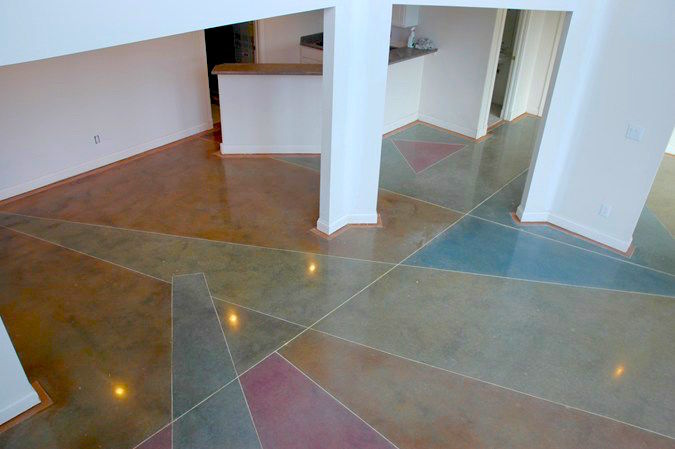Floodproofing
Install Dry Floodproofing: Polished Concrete Floor
What Is It?

ConcreteNetwork
Dry floodproofing techniques can be used to make a structure watertight below flood elevation. In the event that barriers and other dry floodproofing techniques fail and water enters the building, installing polished concrete flooring in the basement will help to minimize repair costs. Polished concrete is impermeable and if installed properly, will not need replacement after flooding. While polished concrete upfront costs can be higher than for other types of flooring (particularly vinyl, linoleum, and unpolished concrete), maintenance costs can be lower over time, as polished concrete is more resistant to foot traffic, has a longer service life, and does not require waxing or coating. Daily mopping or scrubbing with non-abrasive materials will remove dust particles which act as an abrasive and grind away the finish.
Benefits
- Polished concrete is impermeable and if properly maintained, will survive flooding with no damage to structural integrity.
- Typically lower maintenance costs and longer service life than other types of flooring
- Many find that polished concrete is an excellent option for unique and crisp-looking floor designs
- Since it requires maintenance less often than many other types of flooring, it also requires less frequent applications of chemicals that can be unsustainable to produce
Drawbacks
- Can be colder, louder, and more expensive than other types of flooring
- Improper installation and poor maintenance can result in flooring becoming susceptible to moisture
Regulatory Impacts and Requirements
Potential regulatory touchpoints in Boston and Massachusetts include:
- Building Code/Permits
- Stretch Energy Code
- Fire Department
Resources
- Eneref Institute: Sustainable Flooring: The Benefits of Polished Concrete
- ModernCrete: Polished Concrete Floor Maintenance tips
- ConcreteNetwork: Polished Concrete Benefits
A Sample of Providers
- Polished Concrete of New England
- Find other polished concrete contractors serving the greater Boston area through the ConcreteNetwork here


